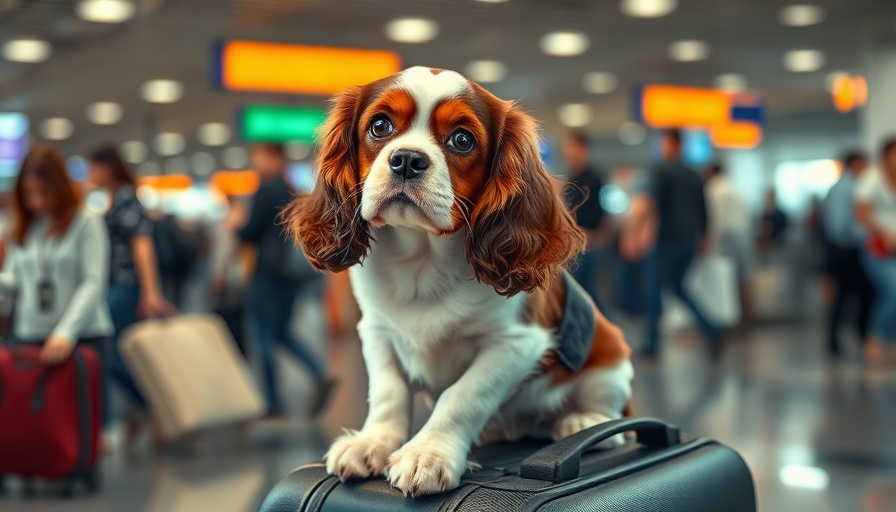
Understanding Pet Travel in 2025
Traveling with pets has become increasingly common, yet the challenges involved remain daunting for pet owners. As of 2025, airline policies regarding pet travel can vary significantly, creating confusion and stress for pet parents and their furry companions. Planning ahead is essential to ensure a seamless travel experience, and being well-informed about regulations can reduce travel-related anxiety for both you and your animal.
The Importance of Pet Preparation
Many experts suggest that flying can often be a jarring experience for animals. Anxiety can be exacerbated by the unfamiliar environment of an airport and a flight. Visiting the veterinarian before your journey is recommended, especially if your pet exhibits signs of anxiety or has health considerations. Your vet can propose suitable medications or calming solutions that ensure your pet’s comfort, making air travel less stressful and more enjoyable for everyone involved.
A Look at Airline Policies
Before you fly, each airline’s specific pet policy should be closely reviewed, as they often differ in terms of carrier requirements, fees, and the types of pets allowed in-cabin versus cargo. For instance:
- United Airlines: Pets must remain in a carrier throughout the flight, fitting under the seat. A $150 fee is applicable for both domestic and international travel.
- Delta Airlines: Pets can fly in a soft-sided kennel that fits under the seat. Fees range from $125 to $200, depending on specific circumstances.
- American Airlines: Both cats and dogs are allowed in the cabin. The pricing typically sits at $150 per way for their journey.
- Southwest Airlines: Allows small pets in the cabin for a $125 fee each way; only one carrier is permitted per passenger.
- JetBlue: Offers room for small pets under their seat, with a fee of $125 for in-cabin travel.
While larger pets may require cargo transport on certain airlines, it's essential to note that not all airlines are equipped for such services. For example, while American Airlines provides cargo options, United and Delta do not.
Essential Steps for a Stress-Free Journey
Proper preparation can significantly minimize the stress of traveling with pets. A few key steps include:
- Train Your Pet to Their Carrier: Familiarize your pet with their travel carrier by encouraging them to explore it at home. Providing bedding or toys can make this space more inviting.
- Pack Pet Necessities: Always include food, water, medications, and waste bags in your carry-on for unexpected delays.
- Time Your Flights Wisely: Avoid peak travel times and opt for flights during cooler parts of the day to protect your pet from extreme temperatures. Early morning or late evening flights are typically ideal.
What Pet Owners Should Keep in Mind
Each airline has its set of rules and requirements, so it's crucial to stay educated about specifics relevant to your chosen flight. From weight limits to carrier specifications, being informed can make all the difference. It's also worth noting that airlines continually update their policies, so checking for the latest information is essential before boarding your flight.
Conclusion: The Right Preparation Makes All the Difference
Traveling by air with pets doesn’t have to be a complicated affair. By taking the time to understand airline regulations and preparing your pet adequately, you can ease the travel experience. An informed and proactive approach will ensure your pet can join you on your 2025 adventures without added stress.
If you plan on traveling with your pet, reach out to your airline for its specific pet policies, and consider a consultation with your veterinarian for additional travel tips and medication guidelines. This way, you’ll both be ready to take to the skies!
 Add Row
Add Row  Add
Add 




 Add Row
Add Row  Add
Add 

Write A Comment